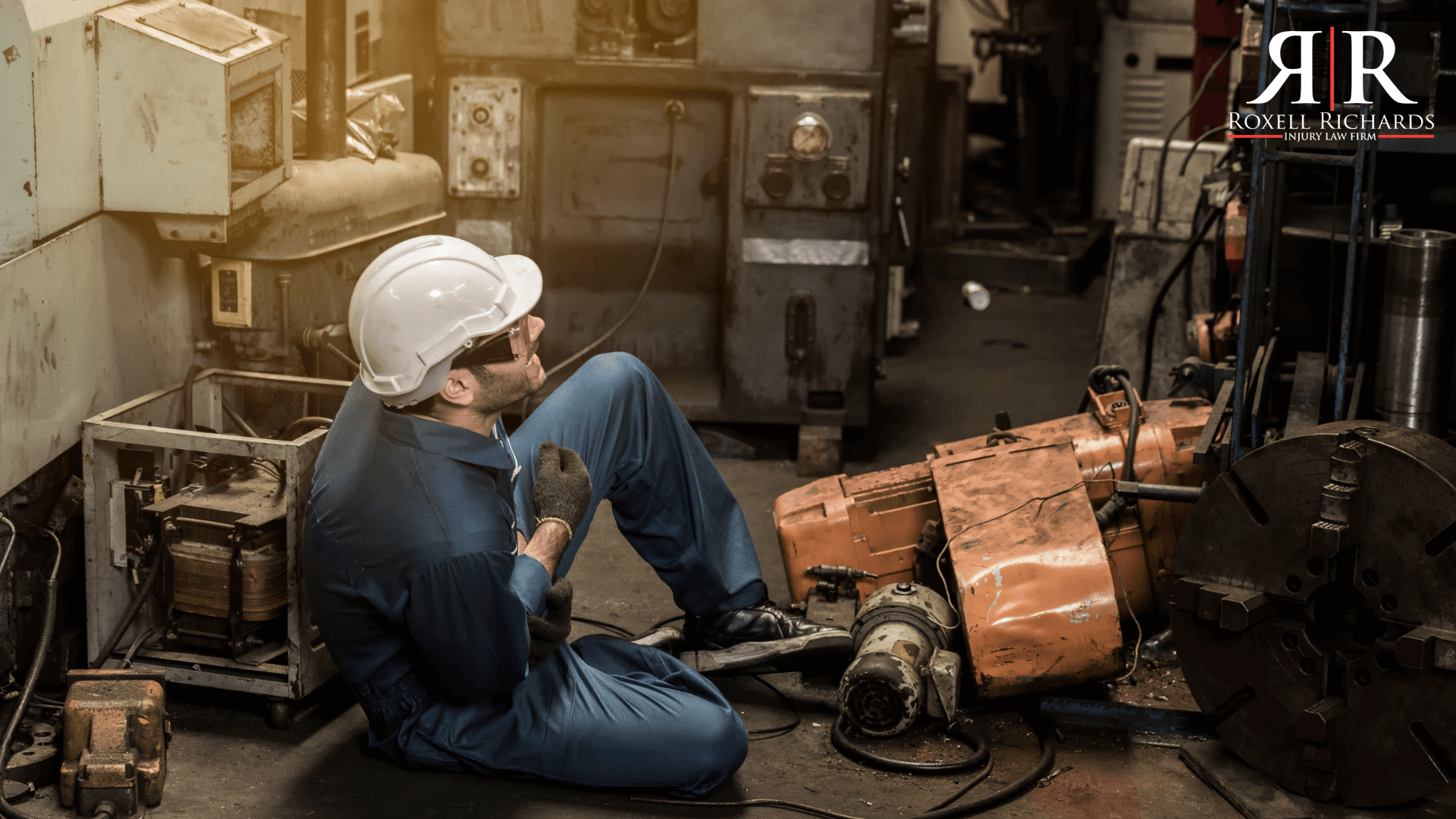In today’s world, factories are crucial in producing the goods we use daily. However, behind the scenes, workers face hidden dangers daily.
Factory injuries pose a significant risk to employees, and it’s essential for everyone to be aware of these risks.
In this article, we will explore the various injury risks in the workplace, their causes, examples of injury risks, common causes of workplace injuries, individuals most likely to be at risk, and the most common health risks associated with factory work.
Common Causes: Factory Injuries, Risks in the Workplace
Injury risks in the workplace can vary depending on the industry and specific job tasks. However, several common injury risks exist across different workplaces.
Understanding these risks is crucial for employers and employees to ensure a safe working environment.
Here are some of the most common occupational injury dangers:
Top 5 Most Common Occupational Injury Dangers
- Slips, Trips, and Falls: Slippery or uneven surfaces, cluttered walkways, and inadequate lighting can contribute to slip, trip, and fall accidents. These incidents can result in fractures, sprains, and head injuries.
- Manual Handling and Lifting: Incorrect lifting techniques or attempting to lift heavy objects without the proper equipment can lead to strains, sprains, and back injuries. Jobs that involve frequent lifting, pushing, or pulling are particularly susceptible to these risks.
- Machinery Accidents: Working with machinery poses significant risks, such as entanglement, crushing, or being struck by moving parts. Lack of training, inadequate safety guards, or failure to follow safety procedures can lead to severe injuries or amputations.
- Falls from Heights: Jobs that involve working at heights, such as construction or window cleaning, carry a high risk of falls. Falling from ladders, scaffolding, or roofs can result in life-threatening injuries, including broken bones and head trauma.
- Struck by Objects: Falling objects, flying debris, or being struck by moving vehicles or equipment can cause serious injuries, including concussions, fractures, or internal injuries. This risk is particularly significant in industries such as construction or manufacturing, where heavy objects are present.
Other Common Occupational Injury Dangers
- Electrical Hazards: Working with electricity without proper precautions can lead to electrical shocks, burns, or even electrocution. Faulty equipment, wiring exposure, or failure to observe electrical safety protocols can increase the risk of these incidents.
- Exposure to Hazardous Substances: In workplaces where chemicals, gases, or other toxic substances are present, employees may face risks such as respiratory problems, skin irritations, or long-term health issues, including organ damage or certain types of cancer.
- Repetitive Motion Injuries: Jobs that involve repetitive motions, such as assembly line work, typing, or operating machinery, can lead to repetitive strain injuries like carpal tunnel syndrome. These injuries result from the repeated stress on specific muscles, tendons, and nerves.
- Workplace Violence: In some industries, such as healthcare or retail, employees may face the risk of workplace violence from customers, clients, or even colleagues. This can lead to physical injuries, psychological trauma, and emotional stress.
- Ergonomic Hazards: Poor ergonomics, such as improper workstation setup, uncomfortable seating, or repetitive awkward postures, can contribute to musculoskeletal disorders. These conditions affect the muscles, tendons, ligaments, and other soft tissues, causing pain, discomfort, and reduced productivity.
In fact, employees should actively participate in safety programs, adhere to safety protocols, and promptly report hazards or incidents. And by identifying and addressing these injury risks, workplaces can become safer environments for all employees.
Causes of the Greatest Risk of Factory Injuries to Workers
Several factors contribute to the greatest risk of injury to workers in various industries.
While the specific causes may vary depending on the workplace, some common factors stand out:
Lack of Training and Awareness
Injury risk can be considerably increased by inadequate worker training and awareness of safety standards and procedures. Also, employees are more likely to act in ways that put them in danger if they are not aware of proper safety procedures or potential risks in the workplace.
Inadequate Safety Equipment and Measures
Failure to provide appropriate safety equipment and implement necessary safety measures can significantly enhance the risk of injuries. And this includes not providing personal protective equipment (PPE), neglecting to install safety guards on machinery, or failing to maintain safety systems and equipment.
Poor Ergonomics
Jobs that require repetitive motions, prolonged standing or sitting, or awkward postures without proper ergonomic design can lead to musculoskeletal disorders and chronic pain. Also, inadequate workstation setup, uncomfortable seating, and lack of ergonomic training contribute to this risk.
Fatigue and Workload
Working long hours without sufficient rest breaks, excessive workloads, and demanding schedules can result in fatigue. Fatigue impairs concentration, slows reaction time, and increases the likelihood of errors and accidents.
Inadequate Maintenance
Failure to regularly inspect and maintain equipment, machinery, and facilities can lead to malfunctions, breakdowns, and hazardous conditions. This can increase the risk of accidents and injuries for workers.
Improper Use of Tools and Equipment
Incorrect or unauthorized use of tools and equipment can pose significant risks. Lack of training on proper usage, not following manufacturer’s instructions, or using damaged or defective equipment can result in accidents and injuries.
Hazardous Substances
Exposure to hazardous substances, such as chemicals, gases, or biological agents, can have severe health consequences without appropriate safety measures.
Lack of proper training, inadequate ventilation systems, and failure to provide personal protective equipment significantly increase the risk of injuries and long-term health issues.
Human Error
Human error is a significant factor in many accidents and injuries regardless of the workplace. Mistakes in heavy lifting, lapses in judgment, or negligence can lead to hazardous situations and harm workers.
To mitigate the risk of working at heights, employers must implement comprehensive safety measures, including:
- Providing proper training: Workers should receive thorough training on working at heights, fall prevention, and using safety equipment.
- Using appropriate fall protection systems: Employers should ensure workers can access and properly use the necessary fall protection systems, such as harnesses, guardrails, or safety nets.
- Regular inspection and maintenance: Conducting regular inspections of scaffolding, ladders, and other equipment for heights should be done promptly to identify and address any potential safety hazards.
- Adequate supervision: Having supervisors or designated safety personnel present on-site can help monitor workers and ensure compliance with safety protocols.
- Clear communication: Employers should establish communication channels for reporting hazards, near-misses, or safety concerns while working at heights.
Most Likely to be at Risk from Harm in the Workplace
While workplace injuries can affect anyone, certain factors may increase the likelihood of individuals being at a higher risk of harm.
Here are some groups that are commonly known as being more susceptible to workplace injuries:
New and Inexperienced Workers
Employees who are new to a job or have limited experience may lack familiarity with workplace hazards and safety procedures. Their lack of knowledge and training can make them more vulnerable to accidents and injuries.
Older Workers
As workers age, they may face challenges in physical capabilities, such as reduced strength, flexibility, or slower reaction times. These factors can increase the risk of injuries, particularly in physically demanding occupations.
Workers in High-Risk Industries
Certain industries, such as construction, manufacturing, agriculture, and healthcare, are inherently more hazardous.
Workers in these industries face a higher risk of injuries due to plant accidents and the nature of the work, exposure to heavy machinery, hazardous materials, or physically demanding tasks.
Workers with Pre-existing Health Conditions
Individuals with pre-existing health conditions, such as musculoskeletal disorders, heart conditions, or respiratory issues, may be more susceptible to workplace injuries or experience exacerbated health problems due to work.
Role of Houston Industrial Accident Lawyer in Factory Injuries
In Houston, Texas, industrial accident lawyers are crucial in assisting individuals injured in factory accidents.
In fact, the injury lawyers’ primary objective is to advocate for the worker’s compensation and rights of injured workers and help them seek fair compensation for their medical bills, lost wages, injuries, and losses.
Here are some key roles and responsibilities of Houston industrial accident lawyers in factory injury cases:
- Legal Representation: They provide legal representation to injured workers. They have expertise in personal injury law and are familiar with the specific regulations and standards that apply to workplace accidents.
- Investigation and Evidence Gathering: Industrial accident lawyers conduct thorough investigations to gather evidence about the accident. Gathering evidence helps build a solid case to support the injured worker’s claims.
- Negotiating with Insurance Companies: Lawyers for Industrial accidents in Houston negotiate with insurance companies on behalf of their clients. They have experience dealing with insurance adjusters and understand the tactics employed by insurance companies to minimize or deny claims; their testimonies and case result can attest to their level of expertise.
- Ensuring Compliance with Legal Deadlines: Legal deadlines in relation to personal injury claims, such as statutes of limitations, are matters that industrial accident attorneys are well-versed in.
Also, under federal law, Houston lawyers, with a free consultation, ensure that the required paperwork is submitted by the deadlines, preventing the case from being dismissed for failure to comply.
Conclusion
In conclusion, factory injuries pose significant risks to workers, and it is crucial to be aware of these dangers to ensure a safe working environment.
Improper equipment use and inadequate safety measures are among the leading causes of injuries. Employees working in factories as factory workers should undergo proper training and strictly follow safety protocols to mitigate these risks. Furthermore, young workers, those in physically demanding roles, and individuals who neglect safety guidelines are more vulnerable to harm.
Employers and employees are responsible for prioritizing safety and reducing workplace injuries.






